Introduction
The Myers-Briggs Type Indicator test is a popular tool people use to learn more about their personality types and how they interact with others. Based on the psychological type theory by Carl Jung, the Myers-Briggs test was developed in the 1940s by Katharine Cook Briggs and Isabel Briggs Myers, and then later published in 1962. The answers to questions about your preferences in decision-making and social situations result in 16 different personality types. The test gives you four letters based on your preferences in interacting with the outside world, information processing, decision-making, and judgment style. While this test was designed for humans to learn more about themselves and their preferences, animals often showcase similarities to certain Meyers-Briggs types. Here are the different personality types and their corresponding animals.
ISTJ
According to the Myers-Briggs indicator test, the ISTJ personality type stands for introversion, sensing, thinking, and judgment.
People with this designation are usually fairly reserved and productive. They enjoy organization and routines and are known for being loyal to a fault. ISTJ individuals are relatively common, making up around 14% of the United States population. The animal most similar to the ISTJ personality type is the great horned owl. This owl is fierce and practical but an extremely loyal parent. Great horned owls will fight to protect their family at all costs and work hard to ensure safety and well-being. They are determined and often interact minimally with other species and environments. These owls are greatly respected as they are known as dangerous predators in the forest. Similarly, individuals with the ISTJ personality type are known to get tasks done effectively and efficiently and often earn respect through their accomplishments and practicality.
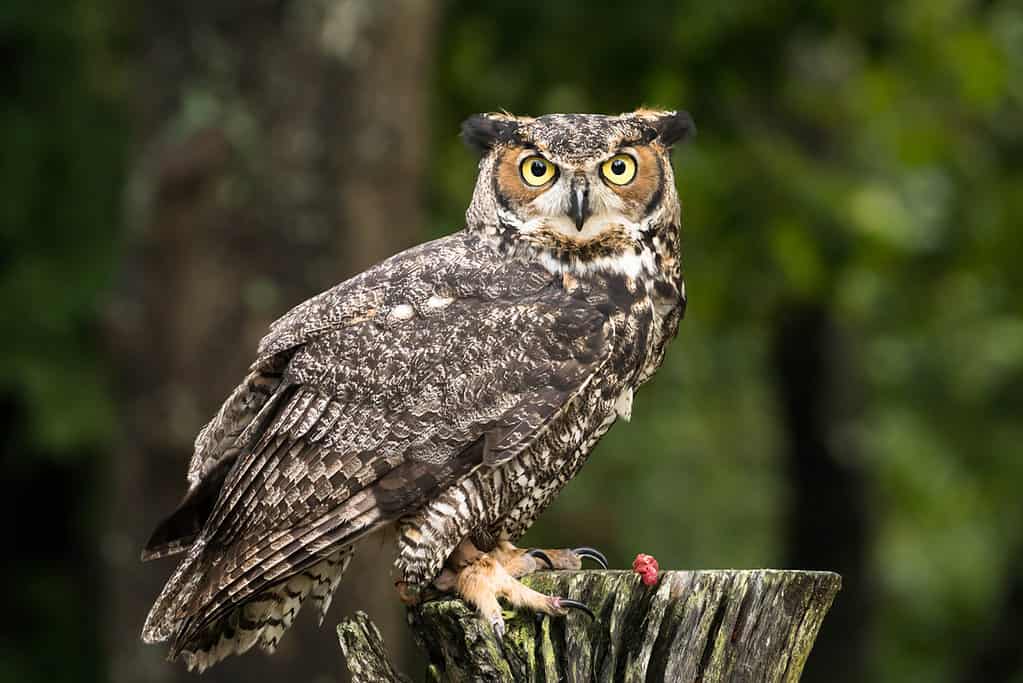
The animal most similar to the ISTJ personality type is the great horned owl.
©iStock.com/makasana
ISFJ
The Myers-Briggs indicator test states that people with the ISFJ personality type are introverted, sensing, feeling, and judging.
They are concerned with the feelings and well beings of others and value harmony in their environments. Still, they are incredibly driven and task-oriented. These traits make ISFJ individuals extremely reliable as they approach each deadline and obstacle with genuine care and total effort. They care deeply about those they are close to and are loyal to them to a fault. Deers are the animals with the most similarities to the ISFJ personality type. They often avoid conflict at all costs and are known for their agreeable, docile nature. Deers care about others, empathize with them, and seek to comfort and accommodate. They avoid any danger and often stay hidden as they do not like to be seen or draw attention, much like ISFJs.

Deers are the animals with the most similarities to the ISFJ personality type.
©WildMedia/Shutterstock.com
INFJ
According to the Myers-Briggs indicator test, INFJs always look for ways to do good in their communities and relationships. Their designation stands for introverted, intuitive, feeling, and judging. They are often referred to as the “advocate” personality type.
INFJs seek to cause change and progress and deeply care about their relationships. They often have clear visions and are driven regardless of backlash or danger. However, they are still sensitive and warm in their personal relationships, wanting to understand others and what motivates them. Humpback whales are extremely similar to the INFJ personality type. These whales are driven by doing good and are known to interfere with killer whales to stop attacks, even when the prey is not of their species. They look out for the well-being of all sea creatures, often swimming up to help dolphins or seals in need and other whales. Humpback whales travel in pods of 2-15 for short periods and then disperse due to their introverted nature. Similarly, INFJs interact well with others but thrive in smaller groups or when they are alone.
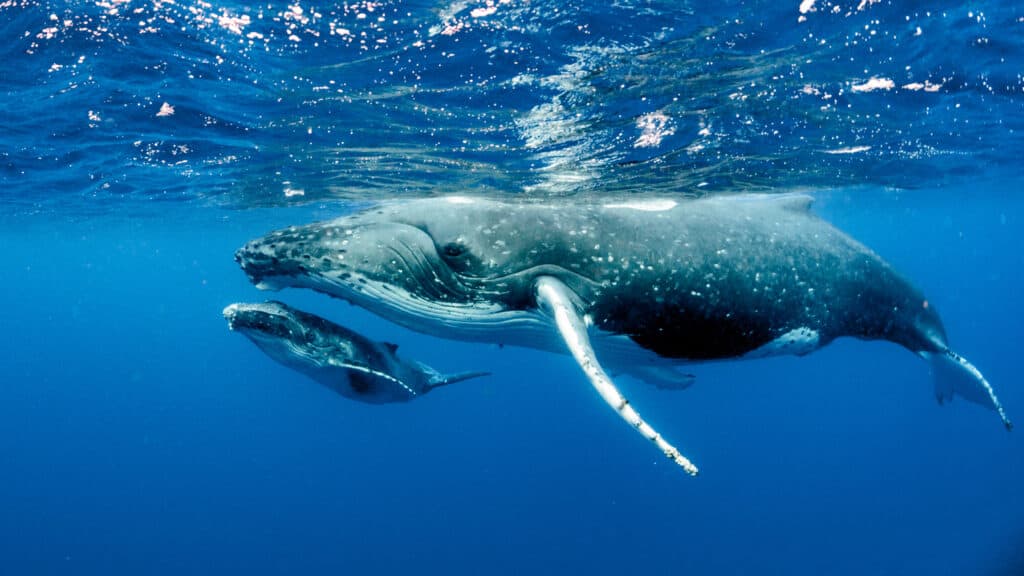
Humpback whales are extremely similar to the INFJ personality type.
©Imagine Earth Photography/Shutterstock.com
INTJ
Commonly known as “the architect” in the Myers-Briggs indicator test, the INTJ designation stands for introverted, intuitive, thinking, and judgment.
These individuals are incredibly independent and self-sufficient. INTJs often have bold, creative dreams they approach in a logical and analytical manner. Due to their determination and perseverance, INTJs often do well in leadership positions and often have high expectations for themselves and others. The INTJ personality type is incredibly rare, only making up around two percent of the population. Eagles are extremely comparable to individuals with the INTJ personality type. They have a powerful vision that allows them to see almost 50 miles in any direction. In addition, eagles are fierce predators that will fight relentlessly to protect themselves and their families. This tenacity is comparable to the grit expressed in individuals with the INTJ designation when working towards their aspirations and goals. Finally, eagles are solitary creatures, flying high above their environments and keeping watch, just like the powerful leadership style of an INTJ.

Eagles are extremely comparable to individuals with the INTJ personality type.
©iStock.com/Mana21
ISTP
The ISTP personality type stands for introverted, sensing, thinking, and perceiving.
Those with the ISTP designation are good observers, often removed from the heart of the situation but well-informed and discerning. They appreciate practical and straight-to-the-point tasks and conversations, yet they value spontaneity more than organization and order. This set of values makes ISTPs incredibly flexible and adaptable, especially when solving problems related to machines or equipment. While they are generally more reserved, ISTPs can open up and bond with others through activities and working together on projects and tasks. They often enjoy taking risks through hobbies like extreme sports and challenging physical activity. Cats are very similar to the ISTP personality type. Known for their independent nature, cats still show subtle displays of affection and care, often through body language while completing various activities. Like ISTPs, cats are reserved and organized, as they demonstrate through their routine grooming habits and nocturnal nature.
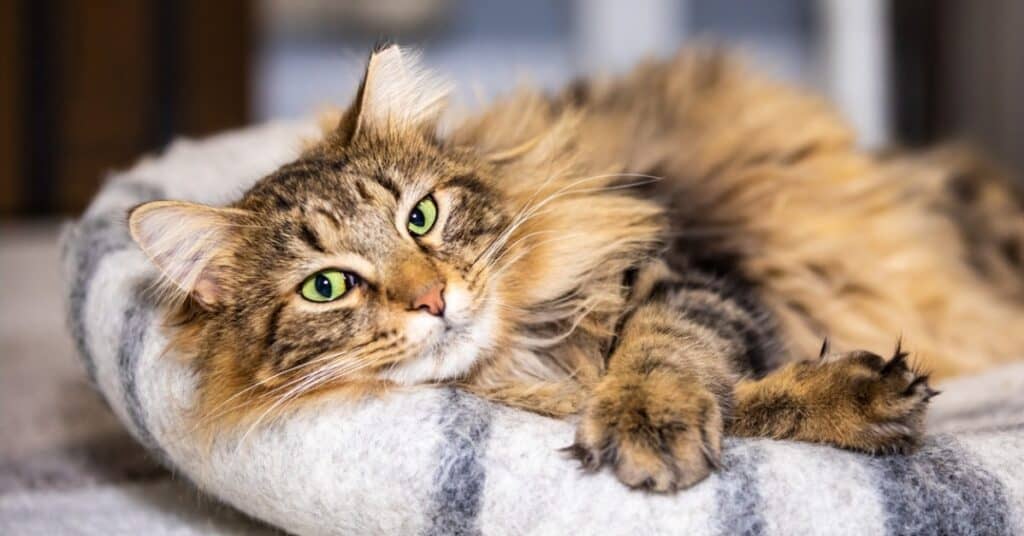
Cats are very similar to the ISTP personality type.
©iStock.com/Svetlana Popova
ISFP
Often referred to as “the adventurer” in the Myers-Briggs indicator test, the ISFP personality type stands for introverted, sensing, feeling, and perceiving.
These individuals are driven by their curiosity and desire to explore. They have many interests and hobbies and are often incredibly flexible, able to adapt quickly to changing situations and environments. ISFPs enjoy each present moment, remaining open to new ideas and relationships. However, they need time to themselves and their own space to thrive and flourish in their pursuits. People with this designation often avoid conflict and disagreements and remain extremely loyal to those they are close with. Pandas share many characteristics with the ISFP personality designation. While pandas spend most of their time alone, they greatly value their familial relationships and enjoy playing and mingling with other pandas. Like ISFPs, pandas are not aggressive and are not predators of any other species, as their diet consists mainly of bamboo and other plants.

Pandas share many characteristics with the ISFP personality designation.
©iStock.com/dangdumrong
INFP
Also known as “mediators,” INFP stands for introverted, intuitive, feeling, and perceiving.
While introverted, INFPs enjoy spending time with a select group of close friends and often deeply value those relationships. These individuals prefer focusing more on the big-picture outcome of their goals rather than being meticulous and getting bogged down with small details. Their feelings and desires influence their decision-making process rather than objective details, and they prefer to keep an open mind rather than have specific and narrow viewpoints. INFPs are also not prone to conflict unless a value or worldview that is important to them is being challenged. The animal most similar to INFPs is a meerkat. Meerkats live in packs ranging in number from five to 30 and take turns completing tasks and fulfilling roles on a day-to-day basis. While they are not the main predators in their environment, they can still team up to defend themselves if needed.
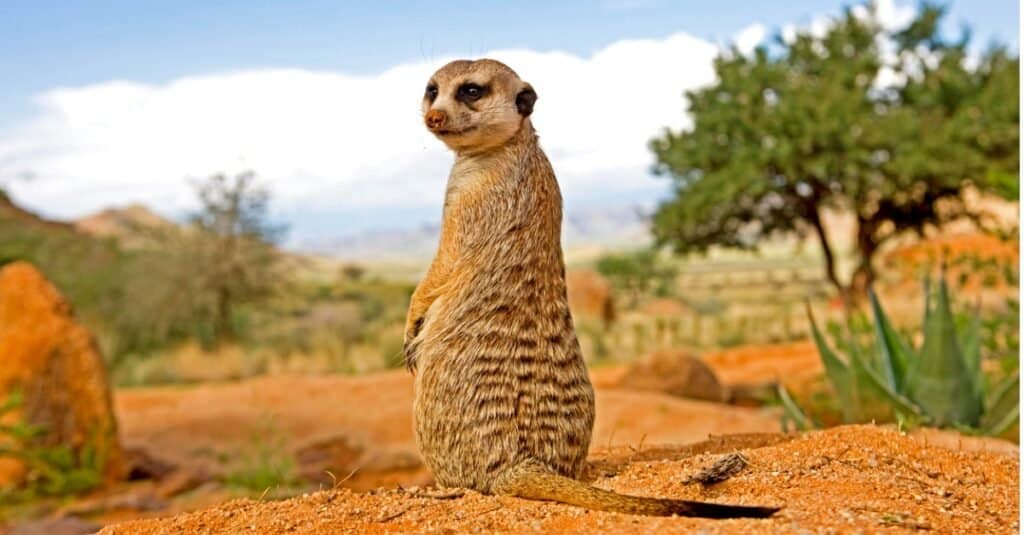
The animal most similar to INFPs is a meerkat.
©iStock.com/slowmotiongli
INTP
INTPs are individuals that are introverted, intuitive, thoughtful, and perceiving.
They are incredibly analytical and sometimes seem detached from their environments because they think so deeply. These individuals march to the beat of their drum regarding logic and reasoning. They often experience difficulty understanding the viewpoint of others when the logic of their argument does not make sense. INTPs value innovation and gain energy from spending time alone rather than exchanging ideas with others. Polar bears show many correlations to the INTP personality type. They often only interact with their cubs and partners and spend most of their time in solitude, hunting and exploring. Other than hunting, polar bears spend most of their time resting and regaining energy. They can be aggressive when threatened but typically only display violence in the form of killing their prey for food.
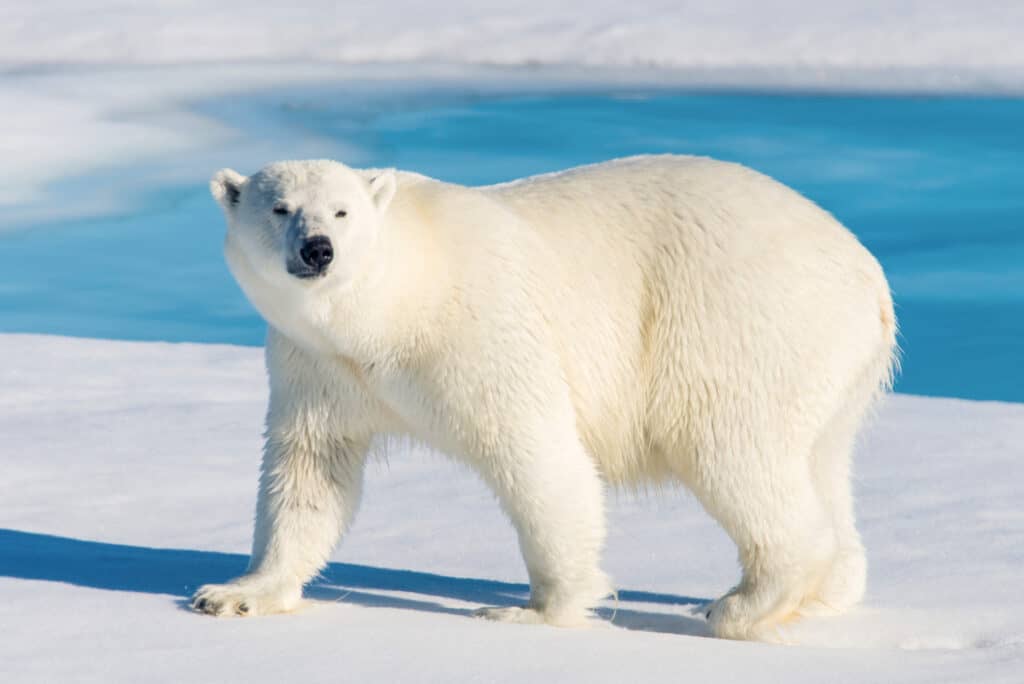
Polar bears show many correlations to the INTP personality type.
©iStock.com/Alexey_Seafarer
ESTP
Individuals with the ESTP designation are extroverted, sensing, thoughtful, and perceiving.
They are often very socially intelligent people that can adapt quickly to any situation and cater to many audiences, keeping spirits high and lighthearted. ESTPs strongly value humor and enjoyment, thriving in fast-paced environments that provide them with thrills and excitement. Unlike many other personality types, ESTPs prefer to see the short-term ramifications of their efforts instead of working towards long-term goals. The ESTP designation is fairly rare, making up around four percent of the United States population. Like ESTPs, cheetahs move at an incredibly fast pace. They spend their days in packs of males and females, scouting their environments for prey and exploring new activities. When cheetahs are related, they are incredibly relational, often helping each other groom and clean, as well as sleeping in packs. Cheetahs are daredevils that respond well to constantly evolving environments and volatile situations, similar to how ESTPs navigate their everyday lives.
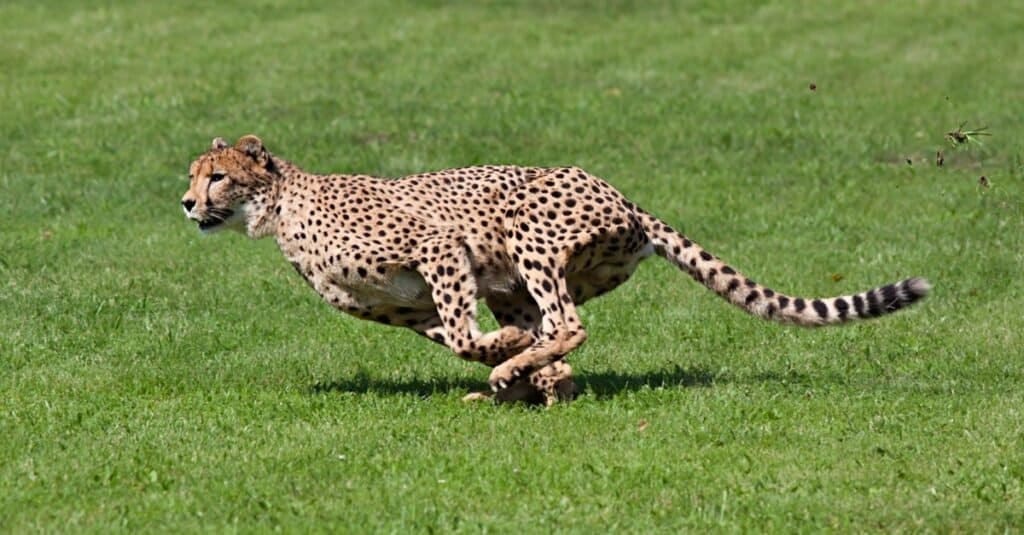
Like ESTPs, cheetahs move at an incredibly fast pace.
©Maros Bauer/Shutterstock.com
ESFP
Also known as the “performer,” the ESFP personality type is identified by extroversion, sensing, feeling, and perceiving.
These individuals are often the class clowns, thoroughly enjoying interacting with others and entertaining them. ESFPs are pretty optimistic and incredibly good at solving problems at the moment due to their strong common sense. People with this designation can sometimes be impulsive, having trouble planning for the future instead of living in the present moment. However, they are often good leaders, understanding the emotional state of those around them and adjusting their approaches to cater to the group’s needs. Like ESFPs, river otters also love to interact with one another. They are highly communicative, using a variety of sounds and gestures to send messages to one another. Otters enjoy playing with each other and rarely live alone. These animals also stick together when hunting and exploring, adapting quickly to their environments like ESFPs.
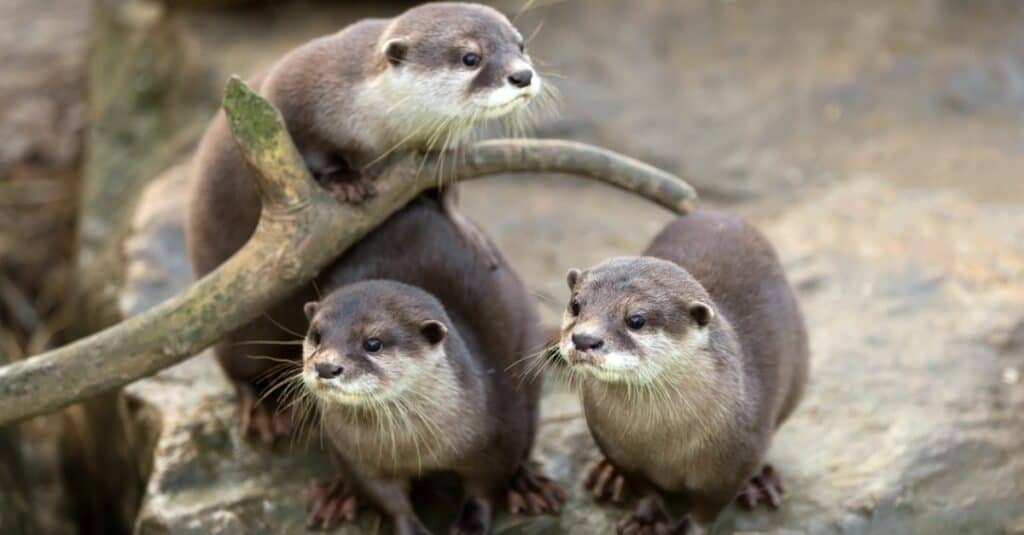
Like ESFPs, river otters also love to interact with one another.
©iStock.com/Artush
ENFP
According to the Myers-Briggs indicator test, ENFP stands for extroverted, intuitive, feeling, and perceiving.
These individuals are incredibly creative and flourish in environments that require innovation and intuition. They are extremely enthusiastic, making good leaders that can encourage and uplift those around them. ENFPs do not do well with routines and instead look toward the future with a fresh perspective that helps them achieve their goals along the way. While they are known to procrastinate, their ability to envision situations and issues in a different light and help improve them makes them effective and reliable individuals. Dolphins possess the same curiosity and social intelligence as ENFPs. These creatures love to play with one another and learn more about their environments. They are brilliant animals that thrive in large groups and rely on one another for protection and entertainment. Like ESFPs, dolphins always want to interact with new people and take on exciting challenges.

Dolphins possess the same curiosity and social intelligence as ENFPs.
©IgorZh/Shutterstock.com
ENTP
The “debater” designation belongs to ENTPs, which represent individuals who are extroverted, intuitive, thoughtful, and perceiving.
These individuals are bold and audacious, unafraid to challenge anything or anyone that disagrees with them. However, they are usually not standoffish or brash in nature. Instead, ENTPs are playful and rebellious, ready to push limits and break norms to learn more about the world and their role in it. They thrive in social environments and value their relationships, often drawn to those who can hold their own in a hearty discussion. Often used to suppressing emotions, ENTPs are not outwardly comforting or empathetic but care deeply for their friends and well-being. Like ENTPs, chimpanzees also have very social yet aggressive natures. They always live together in packs yet plan coordinated attacks on each other like humans. Chimpanzees are highly intelligent and protective of their loved ones. They are incredibly active and seek out adventure, exhibiting many characteristics of ENTPs.
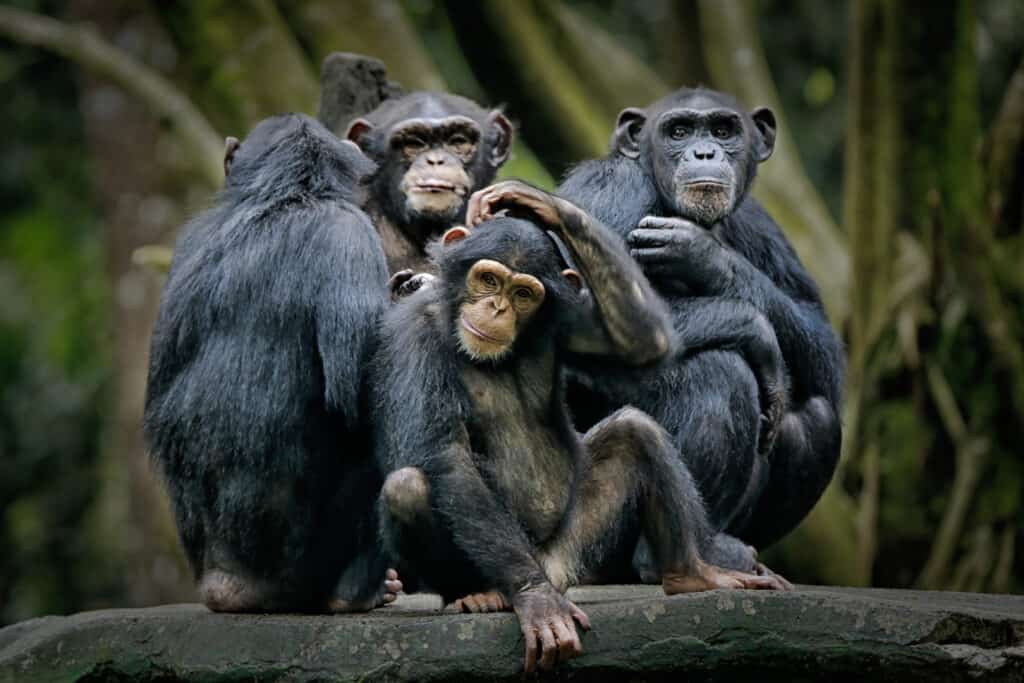
Like ENTPs, chimpanzees also have very social yet aggressive natures.
©Ari Wid/Shutterstock.com
ESTJ
ESTJs are extroverted, sensing, thoughtful, and judgemental.
They are good leaders, able to organize large groups of people in an efficient yet caring manner. These individuals rely on facts more than ideas, drawing from their past experiences to inform future decisions and maximize practicality. ESTJs have great trust in their coworkers, friends, and family. They enjoy spending time with others through structured activities and tasks. They are somewhat rare, making up about nine percent of the United States population. ESTJ traits appear most in lions. Lions live together in packs and are incredibly relational with their young as well as friends of the same sex. Because they are at the top of the food chain in their ecosystems, lions display leadership qualities and are incredibly organized when it comes to hunting and defending their homes.

ESTJ traits appear most in lions.
©Maryke Scheun/Shutterstock.com
ESFJ
ESFJ stands for extroversion, sensing, feeling, and judging.
These individuals deeply value harmony in their environments and often seek out others to help them with their needs. They prioritize family and friends over themselves and are incredibly empathetic. ESFJs follow strict moral rules and are often confused and upset when someone challenges them. They value routine and order in their everyday lives, as it helps them use their strengths to the best of their abilities. Like ESFJs, horses thrive in social environments and can comfort one another effectively. While they are social, horses can become timid when they are exposed to danger or conflict. These creatures rely on the company of other horses to be the happiest and healthiest they can be. They are extremely emotionally intelligent and can even recognize differing emotions in animals outside of their species. Both ESFJs and horses can be social yet reserved and flourish when aiding others.

Like ESFJs, horses thrive in social environments and can comfort one another effectively.
©Adventure_Images/Shutterstock.com
ENFJ
Individuals with the ENFJ distinction are extroverted, intuitive, feeling, and judgemental.
They feel compelled to always do the right thing and believe in a higher purpose for their lives. ENFJs are incredibly persuasive due to their genuine faith in their values and beliefs. They are respected by those around them and are known for their pure intentions. ENFJs may seem standoffish or cold when confronted but are often collected and reasonable. These individuals make great leaders and have a knack for assembling large groups of people to achieve a common goal. Rough collie dogs are incredibly similar to individuals with the ENFJ distinction. These dogs are incredibly intelligent and devoted to their young and caretakers. Rough collies are calm and responsible but can be vocal in times of discomfort or distress. Like ENFJs, Rough collies are agreeable and docile yet are unafraid to raise their voice when needed.
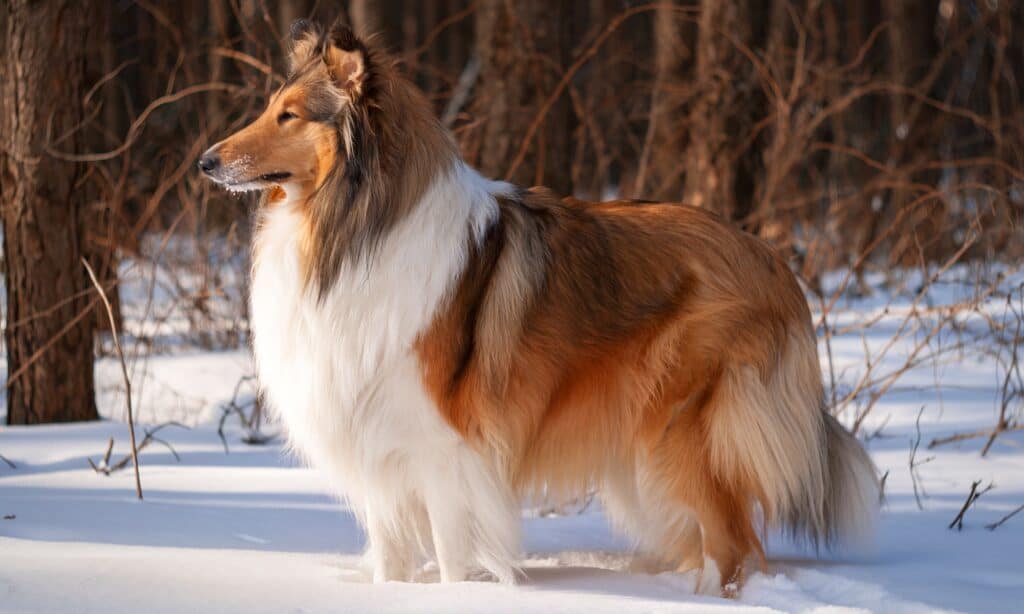
Rough collie dogs are incredibly similar to individuals with the ENFJ distinction.
©iStock.com/Eugenegg
ENTJ
The final personality type on the Myers-Briggs test is the ENTJ or the “commander.” This distinction represents people who are extroverted, intuitive, thoughtful, and judgemental.
These individuals make great leaders due to their commanding presence and charismatic nature. While they are not overly emotional, they still value interactions with others and emphasize organization and structure in their lives. ENTJs are extremely rare, making up only about two percent of the United States population. The animal that best represents the ENTJ personality type is the bear. Bears often stay in groups with their families and are highly social during mating season. They are not overtly aggressive, yet they are strong defenders of their loved ones when threatened. These animals enjoy marking their territory to ward off intruders, and their sizeable commanding presence places them near the top of the food chain in their ecosystems.

The animal that best represents the ENTJ personality type is the bear.
©Tory Kallman/Shutterstock.com
Conclusion
While we often think of ourselves as separate from animals, learning about our similarities to them can be interesting. Animals have the capacity to think and want just like we do and can have individual personalities and traits across species. While the Myers-Briggs Test was designed for humans, it can be a valuable tool in helping us better relate to animals and understand the motivation behind their behaviors.
The photo featured at the top of this post is © The Len/Shutterstock.com
Thank you for reading! Have some feedback for us? Contact the AZ Animals editorial team.






